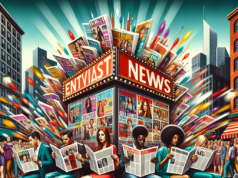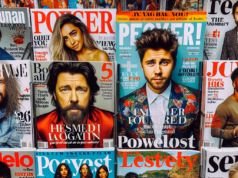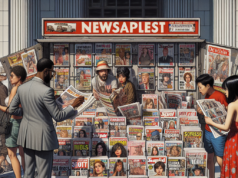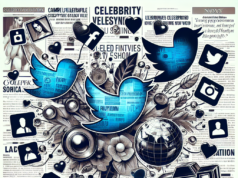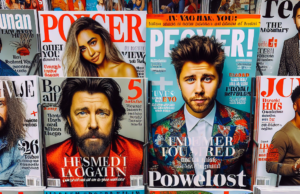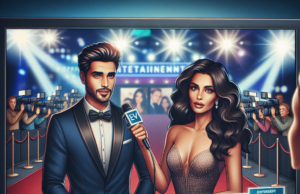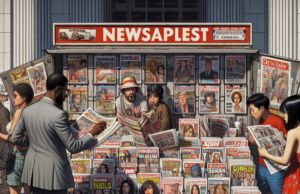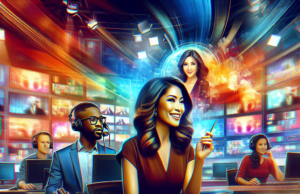
In the glitzy world of Hollywood and the broader entertainment industry, celebrity feuds have become a staple of pop culture, captivating audiences and generating headlines. These conflicts, often played out in the public eye, reveal not only the personal dynamics between stars but also reflect broader societal issues. From bitter rivalries to unexpected reconciliations, celebrity feuds can shape careers, influence public opinion, and even alter the trajectory of pop culture itself. This article delves into the complexities of celebrity feuds, exploring their origins, historical significance, and the impact they have on fans and society at large.
Understanding the Dynamics: What Drives Celebrity Feuds in the Public Eye
Celebrity feuds often stem from a combination of personal grievances, professional rivalries, and the intense scrutiny that comes with fame. The pressures of the entertainment industry can lead to misunderstandings, competition for roles, or differing artistic visions. Additionally, the desire for publicity can exacerbate conflicts, as stars may engage in public spats to maintain relevance in a fast-paced media environment. The allure of drama can also captivate audiences, prompting celebrities to exploit their feuds for publicity, thus creating a cycle that fuels ongoing tensions. Ultimately, these feuds reflect the complexities of human relationships, magnified by the unique pressures of celebrity culture.
A Historical Perspective: Notable Celebrity Feuds That Shaped Pop Culture
Throughout history, celebrity feuds have left an indelible mark on pop culture. One of the most infamous rivalries was between Joan Crawford and Bette Davis, whose animosity during the filming of “Whatever Happened to Baby Jane?” became legendary. Their feud not only captivated audiences but also highlighted the darker side of Hollywood’s golden age. Similarly, the rivalry between rappers Tupac Shakur and The Notorious B.I.G. not only influenced the music industry but also had tragic consequences, culminating in their untimely deaths. These feuds, among others, have shaped public perceptions of the celebrities involved and have often served as cautionary tales about the pitfalls of fame and rivalry.
The Role of Social Media: Amplifying Celebrity Conflicts in Real Time
In the digital age, social media has transformed the landscape of celebrity feuds, allowing conflicts to unfold in real time and reach a global audience almost instantaneously. Platforms like Twitter, Instagram, and TikTok enable celebrities to air grievances, respond to accusations, and engage with fans directly, often escalating tensions. The immediacy of social media can lead to misunderstandings and misinterpretations, as statements are taken out of context and shared widely. Furthermore, the viral nature of online content can turn minor disputes into major news stories, creating a feedback loop where public interest fuels further conflict. This new dynamic has changed how feuds are perceived and managed, making them more public and, at times, more volatile.
Case Studies: Analyzing High-Profile Celebrity Feuds and Their Consequences
Several high-profile celebrity feuds serve as case studies for understanding the complexities of these conflicts. The feud between Taylor Swift and Kanye West began in 2009 when West interrupted Swift’s acceptance speech at the MTV Video Music Awards. This incident spiraled into years of public exchanges, with both artists using their music and social media to express their perspectives. The feud not only affected their careers but also sparked discussions about misogyny in the music industry and the treatment of women in the public eye. Another notable case is the ongoing rivalry between Nicki Minaj and Cardi B, which has been characterized by public altercations and social media exchanges. This feud has highlighted issues of female empowerment and competition within the music industry, demonstrating how celebrity conflicts can reflect broader societal themes.
The Impact on Fans: How Celebrity Feuds Influence Public Perception and Behavior
Celebrity feuds often have a profound impact on fans, shaping public perception and influencing behavior. Fans may align themselves with one celebrity over another, leading to polarized communities and sometimes toxic environments. This allegiance can manifest in online harassment or support campaigns, as fans take sides and engage in the drama. Moreover, these feuds can influence consumer behavior, with fans choosing to support or boycott artists based on their perceived character or actions during a feud. The emotional investment fans have in these conflicts can also lead to a distorted view of the celebrities involved, as personal grievances are often sensationalized and taken at face value, overshadowing the complexities of their relationships.
Moving Forward: Lessons Learned from Celebrity Feuds and Their Resolutions
As celebrity feuds continue to capture public interest, there are valuable lessons to be learned from their resolutions. Many celebrities have found that reconciliation can be more beneficial than prolonged conflict, leading to personal growth and professional opportunities. For instance, the eventual collaboration between Taylor Swift and Katy Perry, who had a highly publicized feud, demonstrated the potential for healing and mutual respect. These resolutions often serve as reminders that behind the glamour, celebrities are human beings capable of growth and change. Additionally, the way feuds are handled can influence public perception, with fans often appreciating transparency and authenticity over drama. Moving forward, it is crucial for both celebrities and fans to recognize the impact of these conflicts and strive for understanding and resolution rather than division.
In conclusion, celebrity feuds are a fascinating aspect of modern culture, revealing the intricacies of human relationships under the spotlight of fame. They serve as a mirror reflecting societal issues, personal struggles, and the complexities of public life. As we continue to witness these conflicts unfold, it is essential to approach them with a critical eye, recognizing the broader implications they hold for both the celebrities involved and their fans. By understanding the dynamics at play, we can appreciate the lessons these feuds offer and foster a more empathetic perspective on the lives of those we admire from afar.

